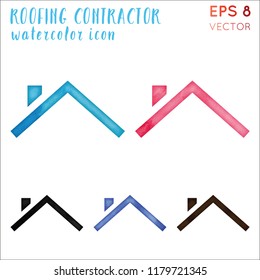Have You Thought About Why Your Paint Application Fell Short Of Your Vision? Explore The Regular Pitfalls That May Be Hindering Your Success
Have You Thought About Why Your Paint Application Fell Short Of Your Vision? Explore The Regular Pitfalls That May Be Hindering Your Success
Blog Article
Team Author-Bland Faircloth
When you're intending to repaint your walls, it's very easy to overlook some key information that can make or break your project. You could think selecting any type of paint will certainly do, or that surface area prep work isn't essential, however these choices can bring about discouraging results. You'll want to avoid typical pitfalls like overloading your brush or hurrying the drying out time between coats. Recognizing these errors can save you time and effort, however there's more to think about if you want a perfect finish that lasts. Allow's discover what you might be missing.
Choosing the Wrong Paint
Selecting the appropriate paint is essential for achieving a smooth, expert finish on your walls. If you select the incorrect kind, you'll promptly find yourself facing problems like peeling, fading, or uneven color.
Beginning by thinking about the paint's base. Water-based paints are terrific for very easy cleaning and fast drying, while oil-based choices are optimal for resilience in high-traffic areas.
Next, consider the surface. Matte coatings hide flaws well but can be tough to tidy. Satin or eggshell finishes provide an equilibrium in between aesthetic appeals and washability, making them suitable for most rooms.
For areas susceptible to wetness, like kitchens and bathrooms, pick a semi-gloss or gloss paint, which withstands mold and mildew.
Do not neglect to inspect the color. Examination examples on your walls to see exactly how they search in various lights throughout the day. Lights can substantially change how a color appears, so this step is essential.
Avoiding Surface Prep Work
Among the largest mistakes house owners make is skipping surface area prep work before painting. You could assume you can just grab a brush and begin, however that'll lead to a less-than-stellar finish. interior exterior painters is essential for a smooth and enduring outcome.
First, evaluate your wall surfaces for any kind of imperfections like fractures, openings, or peeling paint. Loading those voids with spackle or caulk guarantees an uniform surface.
Do not forget to sand the location once it's completely dry, as this develops a far better surface for the paint to follow.
Next, clean your wall surfaces to remove dirt, oil, and gunk. A basic mixture of soap and water can do wonders. If your wall surfaces are especially unclean, consider utilizing a degreaser.
Finally, applying a guide is commonly ignored but can considerably improve the end result, particularly if you're repainting over a darker shade or a surface area that's been formerly repainted.
An excellent guide improves adhesion and helps cover any type of discolorations.
Improper Application Strategies
Applying paint with the wrong methods can result in uneven insurance coverage and an aggravating surface. One common blunder is making use of the wrong sort of brush or roller. Ensure you select a device that suits the paint kind and the surface structure. For smooth walls, a fine-nap roller works best, while distinctive surface areas may require a thicker snooze.
An additional problem is using way too much paint simultaneously. Rather, use slim, also layers. This not just stops drips however likewise guarantees far better attachment. If you notice runs, don't stress-- simply take a brush and smooth them out instantly.
Also, keep in please click for source to maintain a wet side. This indicates overlapping your strokes while the paint is still wet to prevent noticeable lines.
Finally, stay clear of paint in direct sunshine or high humidity, as this can cause the paint to completely dry as well swiftly, causing blistering.
Conclusion
To sum it up, preventing typical painting blunders can make a significant difference in your project's outcome. Constantly select the appropriate paint for the task, never ever skip vital surface area preparation, and utilize correct application methods to make sure a smooth finish. Take your time in between coats and don't overload your brushes or rollers. By https://docs.google.com/spreadsheets/d/1BEzvv6wa7AyGQncb5i3L3eDVouBf6KH4ENFyXffT5bM/edit?usp=drive_link to these pointers, you'll attain a professional-looking outcome that you can be pleased with in your home. Happy painting!
